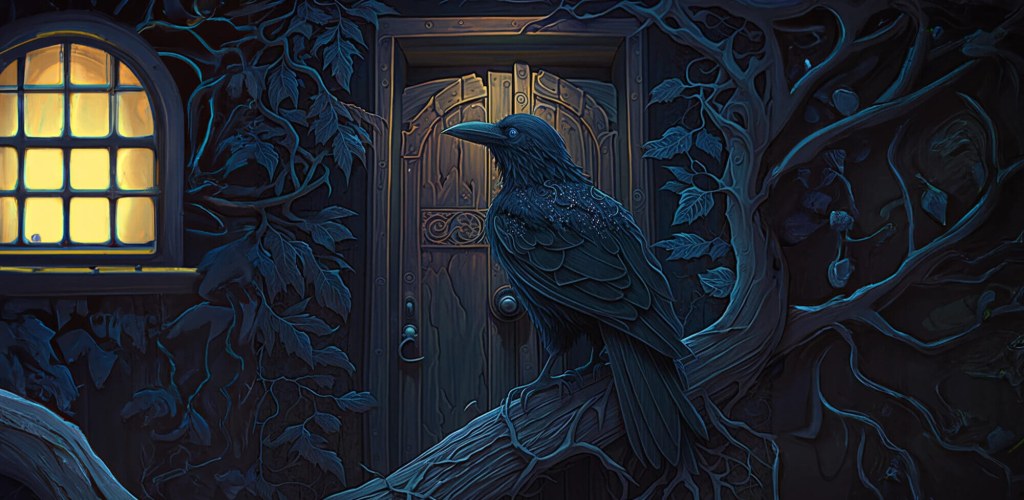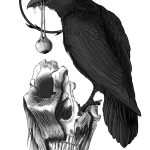The Raven Setting: Unveiling The Enigmatic World With A Click!
The Raven Setting
Introduction
Hello, Raven Enthusiasts! Welcome to this informative article about The Raven Setting. In this article, we will explore the various aspects of the setting in Edgar Allan Poe’s famous poem, The Raven. Prepare to delve into the dark and mysterious world created by Poe, as we unravel the significance of the setting in this literary masterpiece.
2 Picture Gallery: The Raven Setting: Unveiling The Enigmatic World With A Click!


So grab a cup of coffee, sit back, and let’s explore the haunting world of The Raven together!
Overview of The Raven

Image Source: googleusercontent.com
Before we begin, let’s provide a brief overview of the poem for those who may not be familiar with it. The Raven is a narrative poem written by Edgar Allan Poe and first published in 1845. It tells the story of a grieving narrator who is visited by a talking raven that continually repeats the word Nevermore. The poem is known for its dark and melancholic tone, and it explores themes of death, loss, and the human psyche.
The Setting in The Raven
Now, let’s dive into the importance of the setting in The Raven. The setting plays a crucial role in setting the mood and atmosphere of the poem, contributing to the overall sense of darkness and despair. Here are the key elements of the setting in The Raven and their significance:
1. What is the Setting of The Raven?

Image Source: poemanalysis.com
The poem is set in a chamber within the narrator’s house, late at night. This confined and isolated setting creates a sense of claustrophobia and reinforces the narrator’s feelings of loneliness and despair. The darkness of the room mirrors the darkness of the narrator’s soul, enhancing the overall gloomy atmosphere of the poem.
2. Who is Present in the Setting?
The only characters present in the setting are the narrator and the raven. The absence of other human characters further intensifies the narrator’s solitude and heightens the impact of the raven’s arrival. The raven’s presence disrupts the narrator’s already fragile state of mind, leading to his descent into madness.
3. When Does the Poem Take Place?
The exact time period of the poem is not explicitly stated. However, the mention of midnight dreary suggests that it takes place during the late hours of the night. This time setting adds to the eerie and mysterious atmosphere of the poem, as supernatural occurrences are often associated with the darkness of night.
4. Where is the Setting Located?
The setting is located within the narrator’s house. The specific location is not described in detail, but it is suggested to be a secluded and desolate place. This isolation contributes to the narrator’s feelings of despair, as he is cut off from the outside world and trapped in his own misery.
5. Why is the Setting Significant?
The setting in The Raven serves as a metaphor for the narrator’s internal state of mind. The dark and oppressive setting reflects the narrator’s grief, depression, and sense of hopelessness. It reinforces the themes of death and loss that permeate the poem, creating a haunting and memorable reading experience.
6. How Does the Setting Contribute to the Narrative?
The setting in The Raven sets the stage for the unfolding of the narrative. It creates a somber and foreboding atmosphere that enhances the impact of the raven’s arrival and the narrator’s subsequent descent into madness. The confined and oppressive setting intensifies the sense of isolation and despair, making the reader empathize with the narrator’s emotional turmoil.
Advantages and Disadvantages of the Setting in The Raven
Now, let’s explore the advantages and disadvantages of the setting in The Raven and their impact on the overall narrative:
1. Advantages of the Setting
Advantage 1: Atmospheric Intensity 🔥
The setting intensifies the atmosphere of the poem, immersing the reader in a world of darkness and despair. This enhances the emotional impact of the narrative and creates a memorable reading experience.
Advantage 2: Symbolic Representation 💡
The setting serves as a symbolic representation of the narrator’s internal state of mind. It visually portrays his feelings of grief, depression, and isolation, contributing to the overall themes and messages of the poem.
Advantage 3: Suspenseful Tension 🔥
The confined and isolated setting creates a sense of suspense and tension, as the reader anticipates the arrival of the raven and the consequences it will have on the narrator’s psyche.
2. Disadvantages of the Setting
Disadvantage 1: Limited Scope 😕
The limited setting within the narrator’s house restricts the narrative’s scope and prevents the exploration of other external elements. This may leave some readers craving for a broader context and additional layers of complexity.
Disadvantage 2: Lack of Variation 😕
The continuous presence of the setting throughout the poem may lead to a lack of variation and visual stimulation. This can potentially diminish the reader’s engagement over time.
Frequently Asked Questions (FAQ)
Now, let’s address some frequently asked questions about the setting in The Raven:
1. FAQ 1: Does the setting in The Raven have any historical significance?
No, the setting in The Raven does not have any specific historical significance. It is primarily used to establish the mood and atmosphere of the poem.
2. FAQ 2: Could the setting be interpreted as a reflection of Poe’s own life?
While there may be parallels between the setting and Poe’s personal experiences, it is important to approach such interpretations with caution. The setting should primarily be understood within the context of the narrative.
3. FAQ 3: Does the setting change throughout the poem?
No, the setting remains consistent throughout the poem. It is confined to the chamber within the narrator’s house.
4. FAQ 4: Are there any specific architectural details mentioned in the setting?
No, the poem does not provide explicit details about the architectural features of the setting. The focus is primarily on the emotional and psychological impact of the setting.
5. FAQ 5: Can the setting be seen as a character in itself?
While the setting does play a significant role in the poem, it is not traditionally considered a character. However, it does have a profound influence on the narrative and the reader’s interpretation of the events.
Conclusion
In conclusion, the setting in The Raven serves as a powerful tool for creating atmosphere, conveying symbolism, and enhancing the narrative. Through its dark and oppressive portrayal, the setting intensifies the themes of death, loss, and despair, leaving a lasting impact on the reader. So next time you read The Raven, pay close attention to the setting and immerse yourself in the haunting world created by Edgar Allan Poe.
Final Remarks
Disclaimer: The information provided in this article is for educational and informational purposes only. The views and opinions expressed in this article are solely those of the author and do not necessarily reflect the official policy or position of any agency or institution.
Remember to always approach literary analysis with an open mind and explore multiple interpretations. Enjoy your journey into the world of The Raven!
This post topic: Raven



